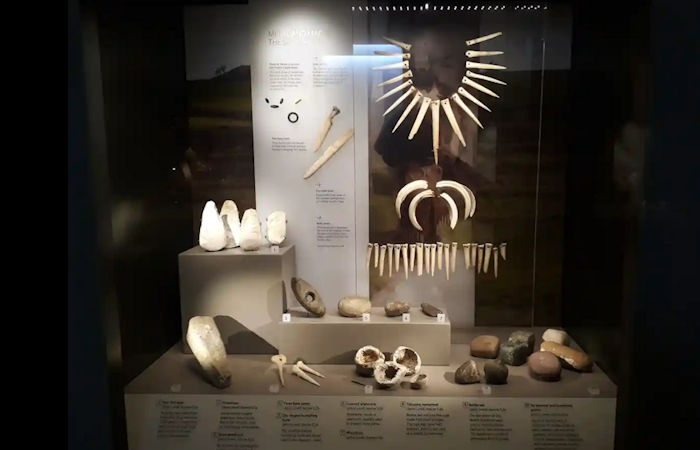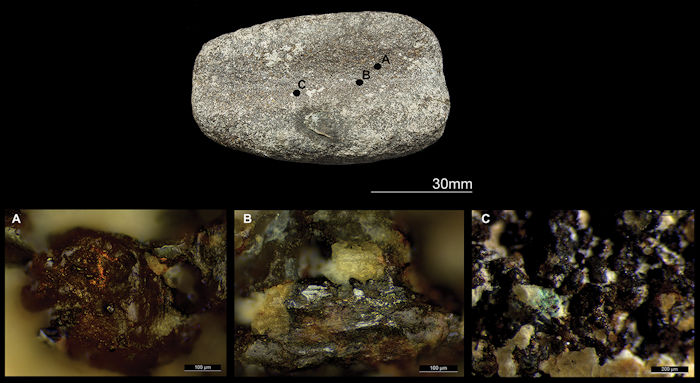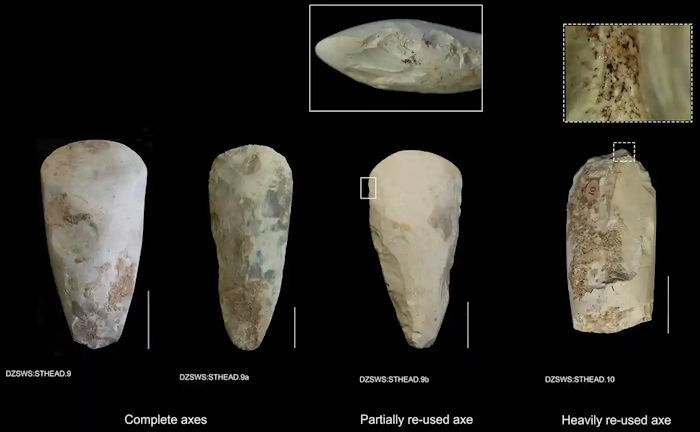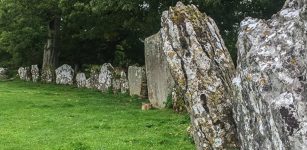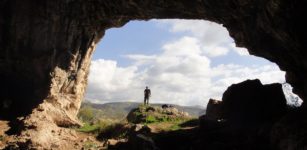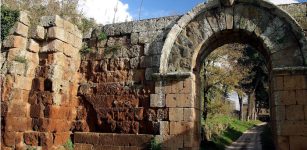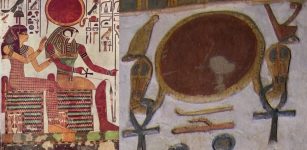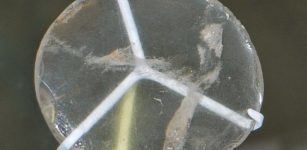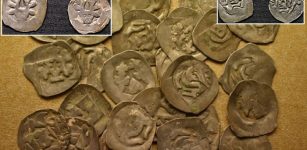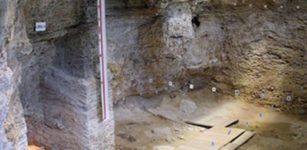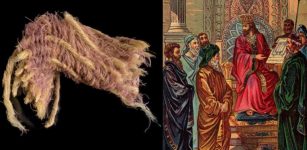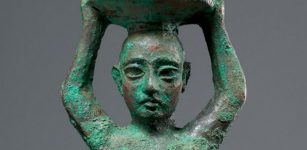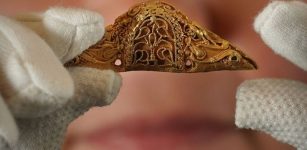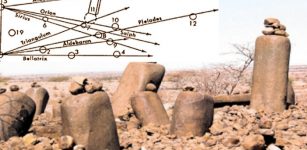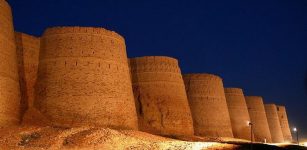Ancient Goldsmith’s Toolkit Discovered Near Stonehenge
Conny Waters - AncientPages.com - While excavating a Bronze age burial mound in 1802 near Upton Lovell in Wiltshire, UK, scientists discovered many curious ancient objects, but they attracted little attention at the time.
With the help of sophisticated technology, researchers re-examined the unearthed objects more than two centuries ago, and experts believe this is a remarkable archaeological discovery. According to archaeologists, a collection of polished “lumps of stone” are a 4,000-year-old goldsmith’s toolkit!
Grave goods from the Upton Lovell burial site on display at the Wiltshire Museum in Devizes. Photograph: Wiltshire Museum, Devizes
The Upton Lovell G2a ‘Wessex Culture’ burial has held a prominent place in research on Bronze Age Britain. Four thousand years ago, two bodies were sequentially laid to rest among a large deposit of pierced animal bones in the barrow now known as Upton Lovell G2a. One of the deceased was wearing an elaborate costume. Who was this individual? Scientists have been unable to determine whether the grave belonged to a shaman or a metal worker.
Now, we took "a new approach to the grave goods, employing microwear analysis and scanning electron microscopy to map a history of interactions between people and materials, identifying evidence for the presence of Bronze Age gold on five artefacts, four for the first time," the scientists wrote in their study published in the journal Antiquity.
Microwear traces on grooved abrader (DZSWS:STHEAD.2) (figure produced by C. Tsoraki; photographs courtesy of Wiltshire Museum, Devizes)
The result of the study showed the ancient grave goods were, in fact, a gold working toolkit, linking gold, stone, and copper objects within a chaîne opératoire, concluding that modern categorizations of these materials miss much of their complexity.
"The other grave goods, which also included flint cups, two broken battle axes and a copper alloy awl, “hadn’t had that much attention from archaeologists, comparatively”, said Oliver Harris, an associate professor of archaeology at the University of Leicester.
Microscopic analysis discovered gold traces on five of the stone tools, which was found to have a similar composition to known bronze age gold. Examination of tiny rubs and scratches revealed how they had been used to flatten and polish the precious metal.
The goldsmith, the archaeologists believe, may have used the tools to make treasured artefacts in which items of jet, amber or wood were covered with thin sheets of gold – examples of which are known from the period.
The flint cups, they suggest, may have been used to mix resins and adhesives, while the awl could have created perforations and patterns.
The grave goods are thought to date from 1850-1700BC, and are associated with the Wessex culture, which flourished in the aftermath of nearby Stonehenge, according to Harris," the Guardian reports.
"The grave goods from Upton Lovell G2a form a striking toolkit. Each stone is shaped and marked by its past and present, its material and origin. Our analysis makes space to specify the nature of goldworking in Bronze Age Britain, and discuss how it drew on the material properties, histories and gestures that these worked stones elicited. Critically, this analysis suggests that goldworking may be different from other forms of metal production and may not, from a Bronze Age perspective, have been considered to be a metal at all, but rather something with its own relational properties that were quite different from those that entwined copper and tin.
Stone materials continued to permeate technological practices associated with metalworking throughout the Bronze Age. Stone tools, including hammers, anvils, moulds, grinding tools and reworked stone axes, played an important role in the different stages of the metalworking process, from the mining and processing of ores to the shaping and finishing of objects.
Flint axes from Upton Lovell at different stages of use. Photograph: C Tsoraki/Wiltshire Museum, Devizes
There is far more complexity here, in relations, histories, gestures and processes, than could ever be captured under the label ‘shaman,’ ‘metalworker’ or ‘goldsmith’. Grave goods are more than representations of a person's identity. They are more even than critical relations in the construction of identity.
What these grave goods stress, when attention is paid to their stories, is quite different. They speak of material journeys, the colour of stone and the texture of gold capturing relations that flow across landscapes. Collectively, as an assemblage, these stone tools reveal a process of goldworking. But this goldworking involves as much the working of stone, in the shaping and upkeep of tools, as it does of metal," the researchers write in their study.
The University of Southampton's Dr. Chris Standish said, "Goldworking tools dating to the Early Bronze Age are extremely rare, so identifying a toolkit for creating composite gold objects is an extremely important discovery. The fact that it is associated with the enigmatic Upton Lovell G2a burial makes it all the more fascinating."
Lead author Dr. Rachel Crellin, from the University of Leicester, added: "This is a really exciting finding for our project. At the recent 'World of Stonehenge' exhibition at the British Museum, we know that the public was blown away by the amazing 4000-year-old goldwork on display. What our work has revealed is the humble stone toolkit that was used to make gold objects thousands of years ago."
Lisa Brown, the curator at the Wiltshire Museum said, "We were delighted to be a part of the Beyond the Three Age System project. The man buried at Upton Lovell, close to Stonehenge, was a highly skilled craftsman, who specialized in making gold objects. His ceremonial cloak decorated with pierced animal bones, also hints that he was a spiritual leader, and one of the few people in the early Bronze Age who understood the magic of metalworking. New research like this, is invaluable in helping the museum to tell Wiltshire's ever-evolving story."
The findings are published in the journal Antiquity.
Written by Conny Waters - AncientPages.com Staff Writer

